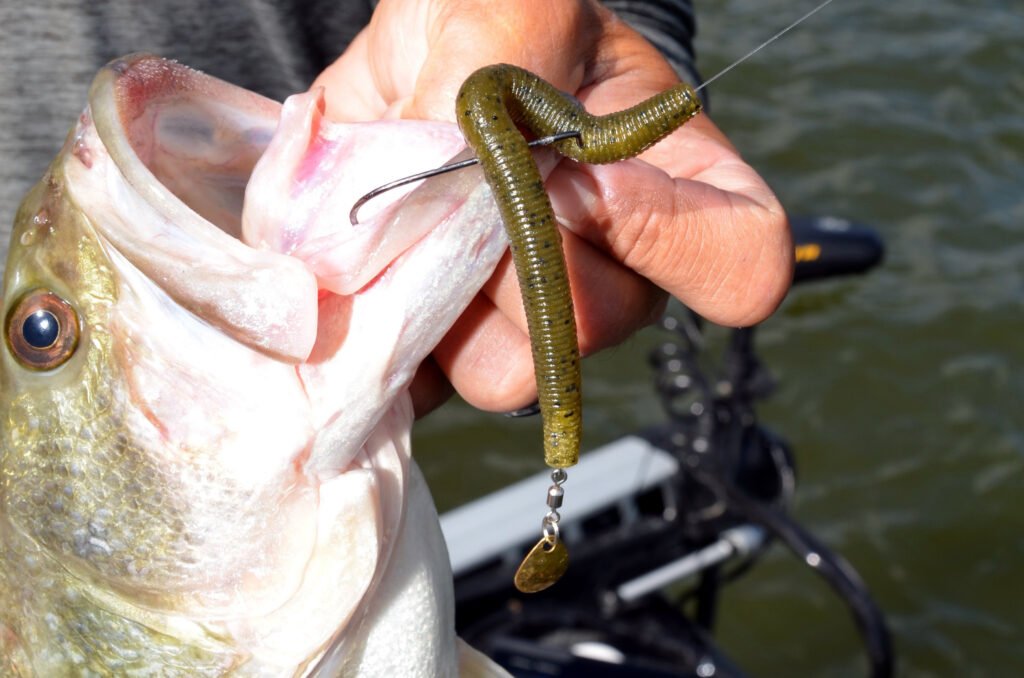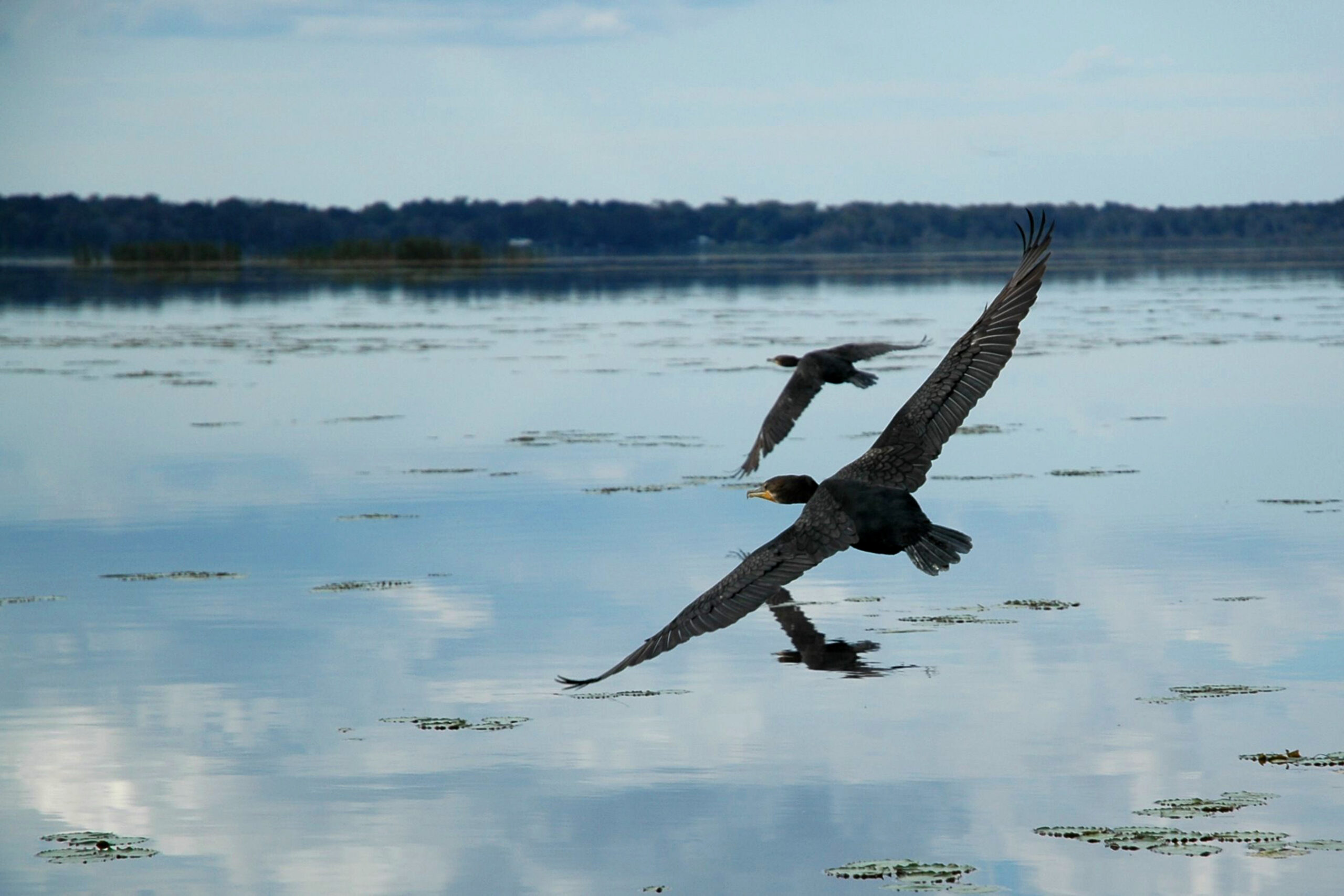One day decades ago, Dad wanted to make a quick morning fishing trip before everyone else arrived at the pond we called the Ol’ Swimming Hole.
We fished for several hours with nothing to show for it by the time the swimmers began to arrive. A few swimmers already began jumping off the bank into the refreshing waters near our fishing spot. Then, my dad uttered those dreadful words I never wanted to hear as a youngster.
“We haven’t caught anything all morning. Let’s go.”
Of course, my standard response was, “One more cast, pleeeeeease!”
Quickly, I tossed a bright red harness worm equipped with three exposed hooks and tipped with a small metal propeller on the nose. The bait landed beyond a submerged sandbar that ran parallel to the shoreline. The bait slowly sank to the bottom in the trough between the bar and the bank. I reeled steadily to slowly turn
the propeller.

As the lure slipped up the back side of the sandbar, something grabbed it. After quite a fight, I finally lipped a bass weighing nearly six pounds. Instantly, red harness worms became my new favorite bait!
Back then, many people fished with these prerigged “harness” or “propeller” worms. They came with two or three hooks protruding from the belly of a straight soft-plastic worm linked together with fishing line. On the nose, a wire held several colored metal, glass or plastic beads and what looked like a miniature aircraft propeller.
Few bass anglers still fish with prerigged worms, if they can even find one. Anglers might find some on dusty shelves in the back of old tackle shops or country general stores, or maybe a flea market.
However, in recent years, these lures began to make a comeback of sorts, only in reverse. Now called a “tail-spinner worm,” it’s a straight worm or similar soft-plastic enticement with a propeller screwed into the tail rather than the nose.
“I started using tail-spinner worms in tournaments and caught a lot of good fish on them,” says Keith Poche, a professional bass angler from Pike Road. “I take a simple straight plastic worm with a little weight to it. To the back of the worm, I attach a Number 1 or 2 spinner blade with a swivel and
a split ring.”
In the old days, most harness worms came prerigged with wire weed guards that snapped over the hooks. Today, people insert their hook points into the soft-plastic worm body to make it weedless. When rigged weedless, a tail-spinner worm can go through most types of entangling cover to get down where lunkers lurk. Some people attach a small split-shot sinker to the line about 12 inches in front of the nose to add a little casting heft or to fish
it deeper.
“I typically throw it weightless,” Poche says. “I can throw a tail-spinner worm into grass, wood, fallen trees, brush piles or anything else and it won’t hang up.”
The propeller creates vibrations and flash. The body gives off a lifelike silhouette. Bass feel the vibrations and see the flash. Then, they spot something that looks like natural forage and attack. Since worms feel lifelike, bass might hold onto them longer than hard lures.
“It’s a very versatile, but subtle finesse technique,” Poche says. “The blade is just big enough to give off some flash, but not too bulky to chase fish away. The spinner draws attention to the bait. I can cover a lot more water than just working a standard soft-plastic stickbait.”
Since they sink slowly when rigged weightless, tail-spinner worms work best in shallow water with abundant cover like stumps, fallen trees and weed beds, anywhere that bass congregate in the shallows. Toss it into a sweet spot and let it sink. Steadily reel it just over the bottom so the propeller turns. To fish it higher in the water column,
reel faster.
Occasionally pause to let the bait sink a few feet with the propeller still spinning. When passing a log, rock or other object, let the worm sink a little before renewing the retrieve so it looks like dying prey. Bass commonly hit tail-spinner worms as they fall. Some people hop it off the bottom and let it drop again.
Unlike the old prerigged worms, anglers can easily change colors or propeller sizes on a tail-spinner. Experiment with different colors, configurations and retrieves to see what works best that day.
John N. Felsher is a professional freelance writer who lives in Semmes, Ala. He also hosts an outdoors tips show for WAVH FM Talk 106.5 radio station in Mobile, Ala. Contact him at [email protected] or through Facebook.




